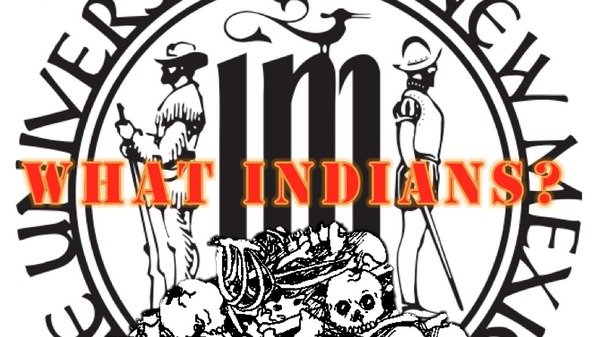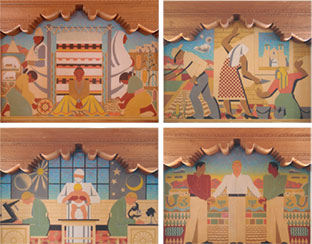Violence of Colonization Represented in UNM Seal

This statement was read during May 5, 2016 during the University of New Mexico’s (UNM) Board of Regents Academic/Student Affairs & Research subcommittee meeting.
by Dra. Alicia Romero
Good afternoon Board of Regents, administrators, faculty, staff, students, and community members.
First, I’d like to take this opportunity to recognize the courage of all the students associated with the movement to remove the current university seal. Regardless of differing perspectives both in this room and on this campus, members of the Kiva Club, the Red Nation, and their many allies have demonstrated a deep dedication to addressing an ongoing issue at UNM.
President Edward Gray developed the first version of the current seal around 1910 in an effort to formalize and streamline university correspondence. That seal, as a reflection of Gray’s values and perspective of higher education and western civilization, imposed upon UNM a problematic identity that brings us here today.
Use of the American frontiersman, representing progress and the pacification of an unruly, unfamiliar land, suggests that Gray was familiar with the ideas of Frederick Jackson Turner’s so-called “Frontier Thesis” (1893) that attributed the development of American nationalism and democracy to the exploitation of western lands perceived to be unutilized. This figure, in his clothing and with his musket, alludes to the violent assimilation tactics used to control, contain, and even exterminate entire Native communities from the map. Some of those tactics included forced relocations and boarding schools. As opposed to representing any Indigenous people in human form on the seal, homage was given to them – or perhaps to their cultural production – as birds or “Aztec buzzards.” Scholars have noted that such a form of natural or spiritual representation of Native people was one strategy used to eliminate them as a threat to Western progress, and effectively promoted the idea of the “vanished race” in the American popular imagination.

In a similar way, the representation of the other human figure — the Spanish conquistador — poses a problem in terms of the complicated history of colonialism and the identities of Spanish-speaking people of New Mexico — Nuevomexicanos. New Mexico and Arizona were the last of two territories gained from the US-Mexico War (1846-1848) that achieved an incredibly delayed statehood. This was partly due to the demographic imbalance of Mexicans and Indigenous people compared to white Americans. We see the gradual shift to identify publicly as “Spanish American,” i.e. white or European among many Nuevomexicanos in an effort to survive culturally and politically in the dawn of American takeover. When we contextualize the early years of UNM and the creation of the 1910 seal in terms of the stark socioeconomic realities facing Nuevomexicanos at that time, and even now — the conquistador becomes a mythological, heroic figure of whiteness and grandeur in the tri-cultural fantasy promoted in the territory then, and in the state currently, that served as a counter to the “greaser” and peasant image associated with a non-white Mexicano identity. The conquistador was and is a troubling figure for Nuevomexicanos, especially at UNM, simply because out of fifteen faculty members in 1910, only one was Spanish-surnamed, and out of forty undergraduates, again, only one was Spanish-surnamed. Admittance into the university consisted of one requirement: fluency in reading, writing, and speaking English. Needless to say, attending UNM was out of reach for most Spanish Americans, Nuevomexicanos, and Natives alike.
It should come as no surprise that the seal upholds the tri-cultural myth of white, Nuevomexicano, and Native harmony, and in doing so, denies the existence of centuries of African-descent people in New Mexico. The exclusion of any groups outside of the tri-cultural schema, and by extension, outside of the UNM official seal, and the endorsement of problematic colonial figures only further communicates who is and who is not welcome in the institution.
UNM is participating in a national conversation about the importance of symbolism, identity, history, and healing that many other entities have faced recently and in decades past.
I ask all in attendance to weigh the importance of upholding divisive symbols that cause grief, trauma, and distress to many in our academic, local, and regional communities over the opportunity to create emblems celebrating the value that diversity — in its many forms — brings; symbols that uplift, unite, and underscore inclusivity and equity at the University of New Mexico.
